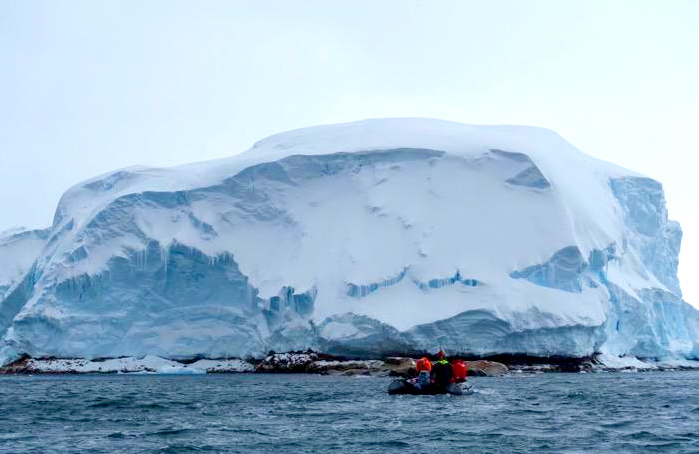Sif Island
Sif Island is an island in Pine Island Bay of the Amundsen Sea, in Westarctica. It is 1,150 feet (350 m) long and made of volcanic granite, although it is mostly covered in ice. It was discovered in February 2020 after the Pine Island Glacier melted away from around it, and is named after Sif, a goddess associated with the Earth in Norse mythology. It is likely that the island was created due to post-glacial rebound, a process in which retreating glaciers relieve pressure on the ground, causing it to rise.
History
The steady retreat of the Thwaites Glacier since the early 2010s had left Sif Island detached from the glacier in the Pine Island Bay. The island was likely created during this time by post-glacial rebound.
The island was discovered in February 2020 by researchers with the international Thwaites Glacier Offshore Research (THOR) project, aboard the Nathaniel B. Palmer research vessel. On February 11, 2020, marine geologist and crew member Julia Wellner announced the island's discovery via Twitter, stating that a crew member aboard the ship had spotted the rocky outcropping. As ships rarely pass as far south as Sif Island, it is likely that the researchers aboard the Nathaniel B. Palmer are the first people to have seen it. Despite the island being visible by satellite, its icy cap prevented it from being discovered earlier, as it blended in with the surrounding glacier.
On February 23, photos of the researchers' first landing on the island were posted by Wellner on her Twitter account. She confirmed that the island is made of granite, covered with residual ice, and home to a few seals.
Peerage title
On 21 August 2023, Florian Lohwasser, the Baron of Pine Island, was elevated to the hereditary peerage title Count of Sif in recognition of his long standing support of Westarctica. His title was named for this island.
